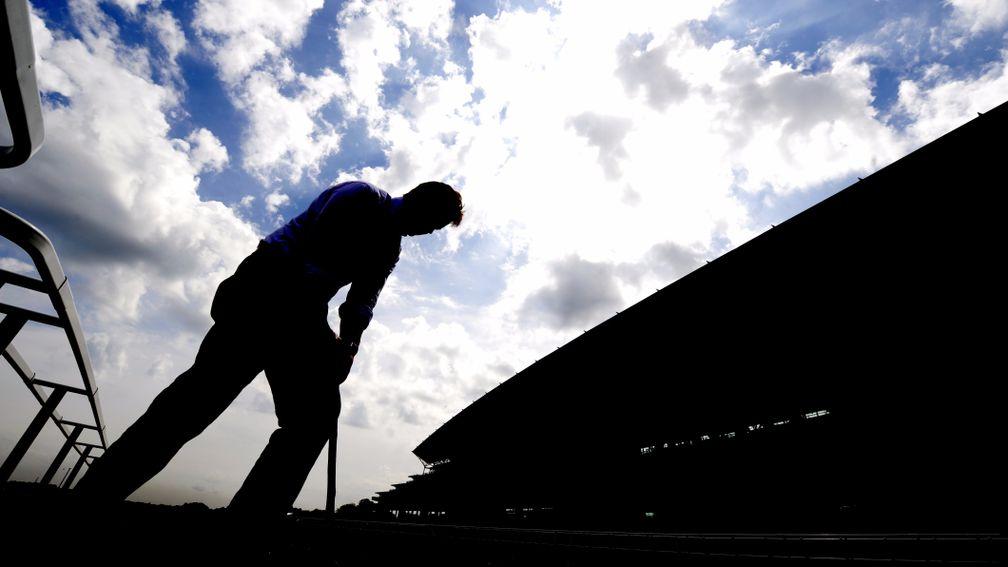Alastair Down with an introduction to one of the sport’s most crucial aspects

First published on Monday, August 8, 2016
Few generalisations apply solidly across the board to everyone in racing but one thing is certainly true: we are all going mad. Or going-mad, perhaps.
The state of the ground is the single greatest determinant on the outcome of a race and is therefore the must-have piece of information.
If you don’t know what the going is then you might as well be reading braille in motorbike gauntlets – you simply can’t get that all-important feel for things.
The centrality of the going means that it is forever a bone of contention. Trainers who live hundreds of miles from a particular track are happy to inform the clerk of the course that he knows precisely nothing about what has been going on under his nose.
Clerks of the course are the traffic wardens of the turf – utterly essential but seemingly there to be given dog’s abuse by every Tom, Dick and Harriet.
And old habits die hard when it comes to assessing the ground. While child chimney sweeps and pit ponies have disappeared into the mists of history, the clerk of the course, armed with walking stick and Jack Russell, remains alive and well if rarely scientific. The stick is for support and you hurl the dog into the turf and determine the going from the resulting imprint and squeal of pain.
But much has changed. Time was when we happily let nature take its course but now there are political strictures to be obeyed. If it has been dry in the run-up to Cheltenham then the course is under orders to water in order to produce going with some ease in it. Nor will we ever see a fast-ground Derby again.
It is all about risk-minimisation and avoiding the perils of quick ground. Yet the greatest change at the festival has been improved drainage to banish forever the sight of exhausted horses being flogged through desperate conditions and weaving all but drunk up the hill and looking, in Gerald Delamere’s memorable phrase, “like snipe leaving a bog”.
On the Flat the going description hard is now about as common as the white rhino. Firm ground, a commonplace 30 years ago, is fast disappearing and that has consequences for the breed.
This series looks at the going from every conceivable angle from worm’s eye view to bird’s eye view at the top of the stands.
In Britain we now have the GoingStick to add a degree of measurement to our assessment of the ground but in Ireland they won’t give it house room. This perhaps is why the Irish have a richer vocabulary on the ground front – you never get yielding to soft in Britain and any jockey will tell you that Irish soft and British soft are entirely different creatures.
Memory fails me as to which course once reported a few days before a meeting that the going was “heavy where it isn’t flooded”.
Is the heel of experience or the sharpened walking stick wielded with the wisdom of the years a better alternative to the GoingStick, which produces readings that still mean little to many?
At one stage watering was permitted only to promote the growth of the grass but that has long gone out of the window. Thus we get impassioned debates about the perils of over-watering and trainers, punters, vets and breeders all come at the issue from different standpoints.
The great mystery about the exact state of the ground is that it remains any mystery at all. We can send probes to Jupiter yet still come to blows about whether or not it’s on the fast side of good.
The purpose of this analysis of all matters pertaining to the going is to clear the mists, inform the reader and provoke debate about whether we are getting it right, and if not then how we should change for the better and, of course, the all-important bettor.
It is crucial stuff. Never forget the lady owner married to a clerk who finally left him as his going reports were so inaccurate that she regarded them as grounds for divorce.
Steve Dennis speaks to Sandown clerk Andrew Cooper about his role
Members can read the latest exclusive interviews, news analysis and comment available from 6pm daily on racingpost.com
Published on inRP Classics
Last updated